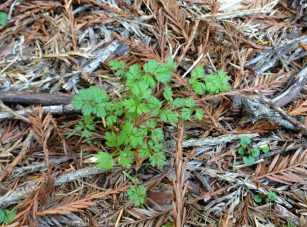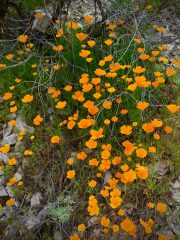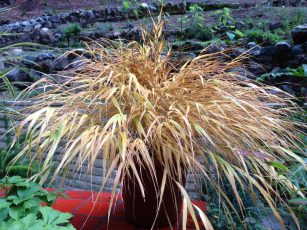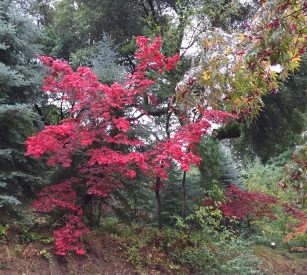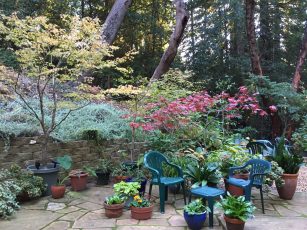Somewhere in Felton near the San Lorenzo river sits a home beneath the redwoods. Surrounded by a white picket fence it?s the site of the annual holiday wreath makers get together and this year we have gathered to kick off the season with pink champagne, cranberry-orange scones and the tools of our trade: gloves, clippers and paddle wire.
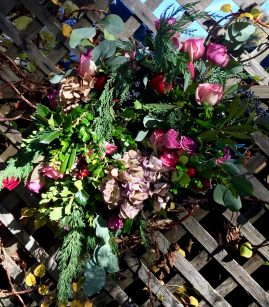
Our hostess Barb Kelley and her husband Reg ventured forth earlier in the week to collect evergreen boughs, holly, flowering branches and various berries for us all to use in our wreaths. Since this extravaganza of supplies and good cheer continues for a week many will return time and time again with grandchildren, friends, neighbors and relatives to make many a wreath. One year Barb counted 50 wreaths made in a single week. This year 44 were made by over 30 wreath makers. To say we have a great time would be a gross understatement.
It all started 13 years ago when Barb needed a quick Secret Santa gift for her bunco card group. She?s a talented lady with flower arranging expertise so a wreath was an easy item for her to put together.
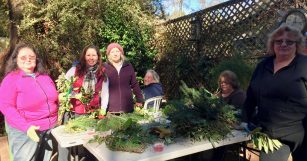
I am always amazed at how many creative people come for this annual event that. One of the show stopping wreaths this year incorporated red and pink roses long with dark pink tulips. Dried hydrangea blooms are always a good accent and we all agreed that the blooming Ruby Glow tea tree branches and the Chinese pistache dark pink berry clusters added just the right amount of color to the other types of variegated foliage.
Long time attendee and material gatherer Martha was up in Tahoe skiing due to the early snow and was greatly missed. I think she holds the record for most wreaths made in a single season. Barb holds the record for the biggest which also weighed the most. Described as a ?Kardashian? it lacked nothing in glitz and glamour.
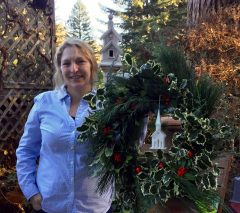
This year I had my eye out for good wreath making plants that also have low water requirements in the garden. Besides the leptospermum ?Ruby Glow? I also found that many of our drought resistant native plants have thicker leaves by design and are perfect additions to a holiday wreath. I haven?t found a manzanita or ceanothus variety that doesn?t last well in a wreath. Also madrone, bay laurel, mahonia, toyon with berries, Douglas fir and redwood boughs and cones look right at home in a wreath or swag.
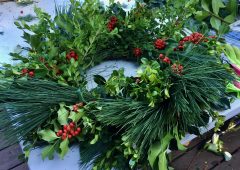
Take advantage of this opportunity to prune your evergreen shrubs and trees to use in a holiday wreath. Besides the plants already mentioned cuttings from strawberry tree, pines, cedar, boxwood, camellia, privet, bottlebrush, pittosporum, leucadendron and nandina berries are long lasting in a wreath. At this time of year, prune your shrubs and trees from the bottom up and from the inside out. Avoid ugly stubs by cutting back to the next largest branch. If the plant has grown too dense, selectively remove whole branches to allow more air and sunlight into the plant.
I look forward to getting together with my fellow wreath makers each December. This is my fourth year and I wouldn?t miss it. You can?t make a bad wreath. They all turn out great plus your shrubs get a little early pruning too.

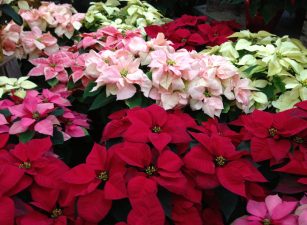
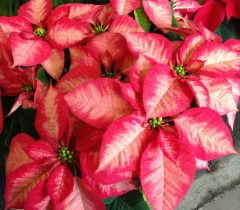
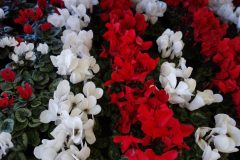
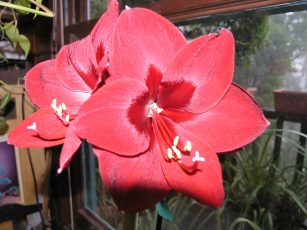
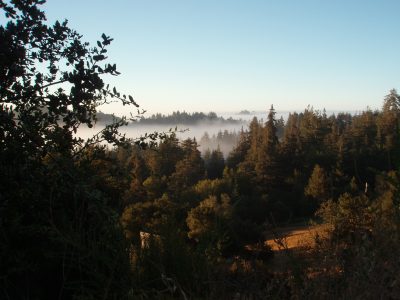
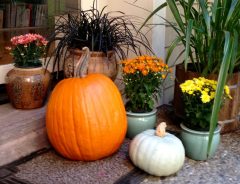 A Thanksgiving Poem? by Jan Nelson,? The Mountain Gardener
A Thanksgiving Poem? by Jan Nelson,? The Mountain Gardener